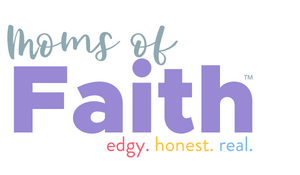Mom Alert: How to Identify, Treat and Prevent Head Lice
If you have a child in school or in day care, then head lice will be a concern for any parent. Head lice are commonly found in girls more often than boys because girls have longer hair. It’s a myth that a child will get lice if their hair is dirty. Lice has a better chance of thriving on clean hair.
Identify Head Lice
Head lice are a nuisance because they cause an itchy scalp on the host. Having an itchy scalp doesn’t mean your child has lice, but if you see your child scratching on the nape of the neck and there’s a red rash, it could be lice. Other signs they may have lice is the whitish colored nits attached to the hair shaft and found close to the scalp. If the whitish color object can be flaked off, then they aren’t nits. Nits have to be picked off. If you look closely on their scalp, you’ll find small brownish lice scurrying around.
Unlike fleas, lice can’t jump or hop, but they move quickly. Once you know for sure, your child has lice then it’s important to treat it right away because lice mature quickly. An adult can lay up to 10 eggs a day. Once laid, the nits hatch in 7 to 12 days. Baby lice mature in less than two weeks!
Head Lice Treatment
There’s controversy when it comes to the different head lice treatments. Some say over-the-counter products like Rid or Nix is harmful to children because of the chemicals or that they are becoming resistant to lice.
Home remedies and natural treatments take longer to work, but it’s up to you as a parent to make an informed decision on which treatment you should use.
If you’ve decided to use Rid or Nix, read the instructions carefully. Regardless of which treatment you use, it’s important to find and remove the adult head lice first and then use the nit comb to remove as much of the nits and lice as possible. Although combing the hair won’t remove all live lice and nits, manually removing them is highly recommended.
If you’ve decided on natural treatments, tea tree oil is effective. Don’t apply this directly to the scalp. Put a couple of drops of tea tree oil on a fine tooth comb and comb through dry hair. Regular creme rinses or hair conditioners are also effective and safe.
Conditioners immobilize the lice and make it easier to remove from the hair. Apply conditioner to dry hair and comb or wrap in a shower cap overnight and comb through in the morning.
Some people have also used olive oil or mayonnaise, but this may be difficult to wash out of your child’s hair. It’ll take a while before your child is rid of lice completely, but be patience and keep at it daily by checking and manually removing empty nit casings, nits and lice.
Wash all bedding, towels, clothes and anything that has come in contact with the head. Continue to change the bedding daily during the treatment until it’s gone. You can add 8-10 drops of tea tree oil in your detergent in your washing machine. Vacuum chairs, couches, and put non-washable stuff animals in a hot dryer for 30 minutes or an air-tight bag for one week.
Head Lice Prevention
All family members should be checked for lice when one child comes home infected. If your child didn’t get lice from school, the school should be notified nonetheless. If your child did get lice from school, it may be ideal to speak with her teacher and discuss how to prevent re-infestation.
Kids at school often work in groups with their heads coming in close contact with others. Girls like to share hair accessories like barrettes, hair ties, hair bands, combs/brushes and hats. They also like to play with each other’s hair. Coat rooms are usually small and hanging jackets are often touching together. These are sure-fire ways of transmitting head lice.
Teach your child that sharing certain personal items like hair brushes is not good just like sharing a lip balm is not hygienic. Putting your child’s hair in a pony tail, braids or a bun will prevent it from falling forward during group activities.
Copyright © Moms of Faith, All Rights Reserved
